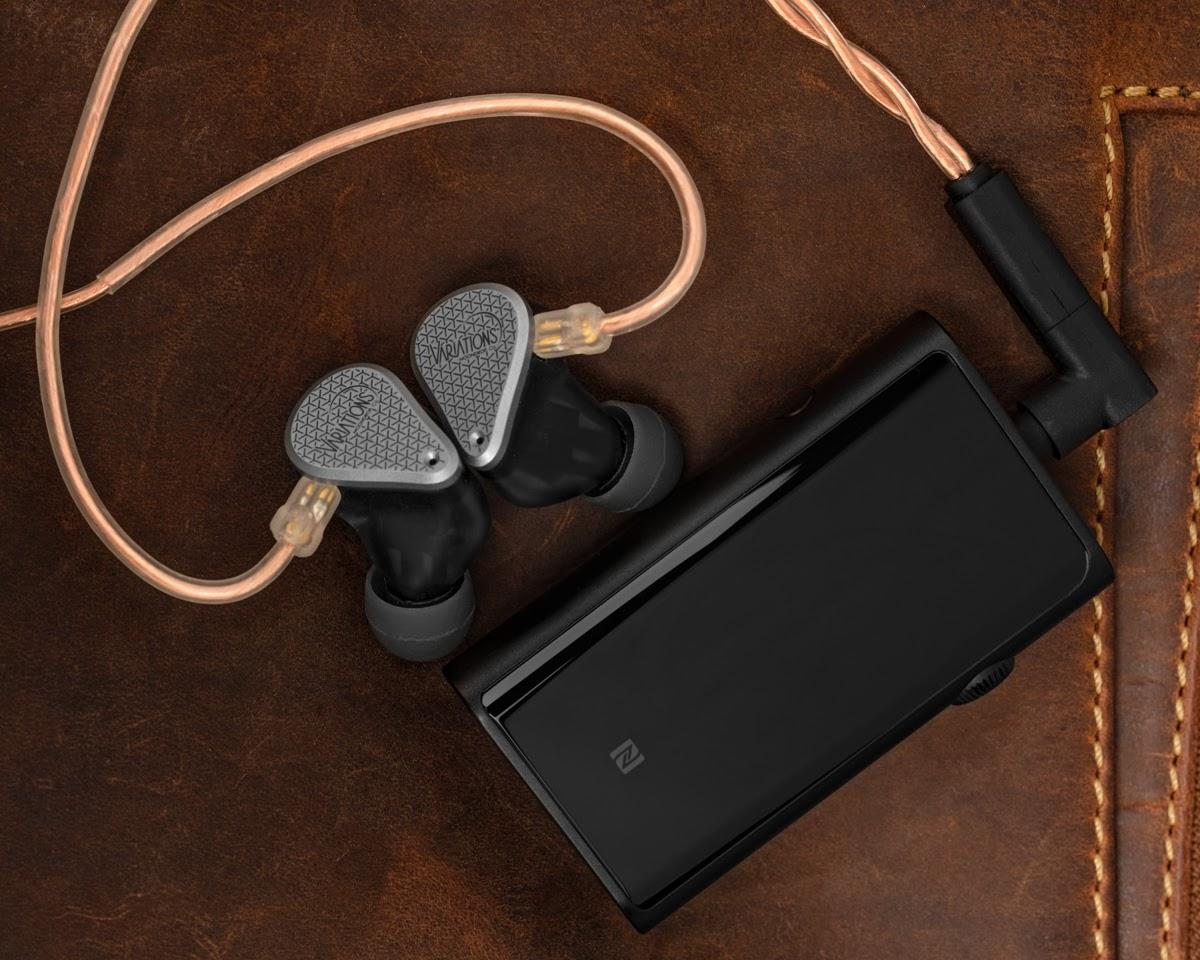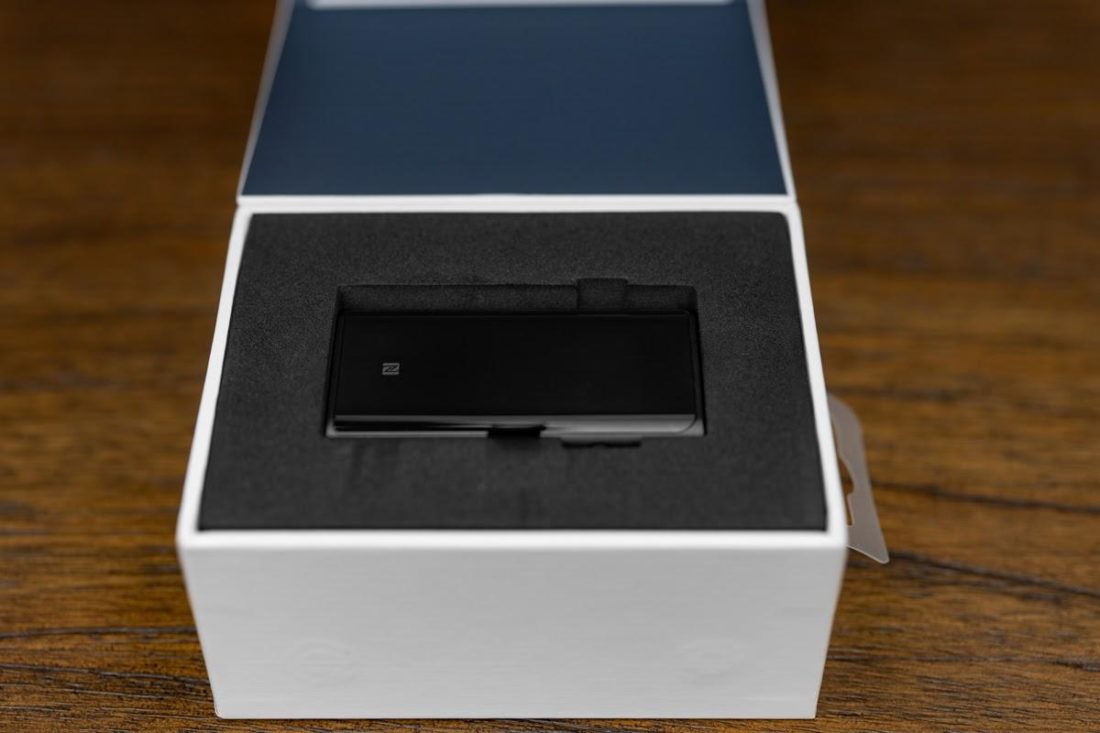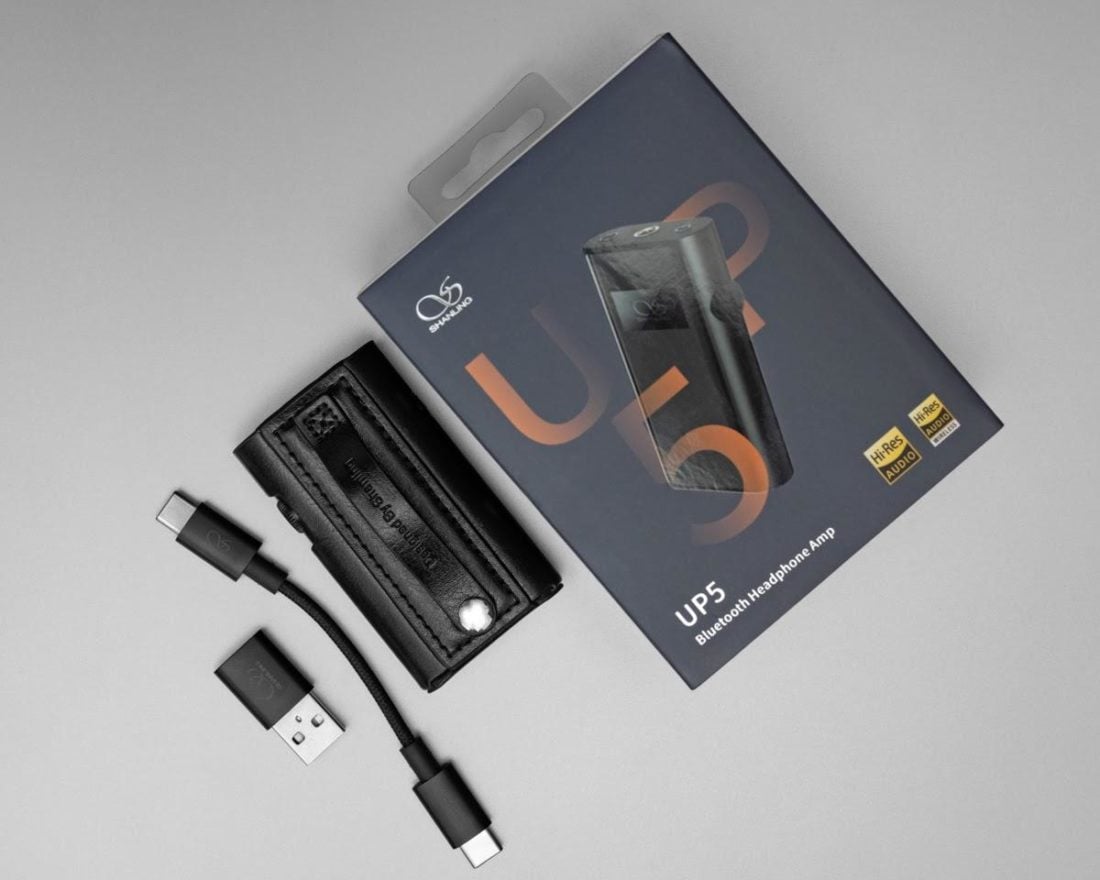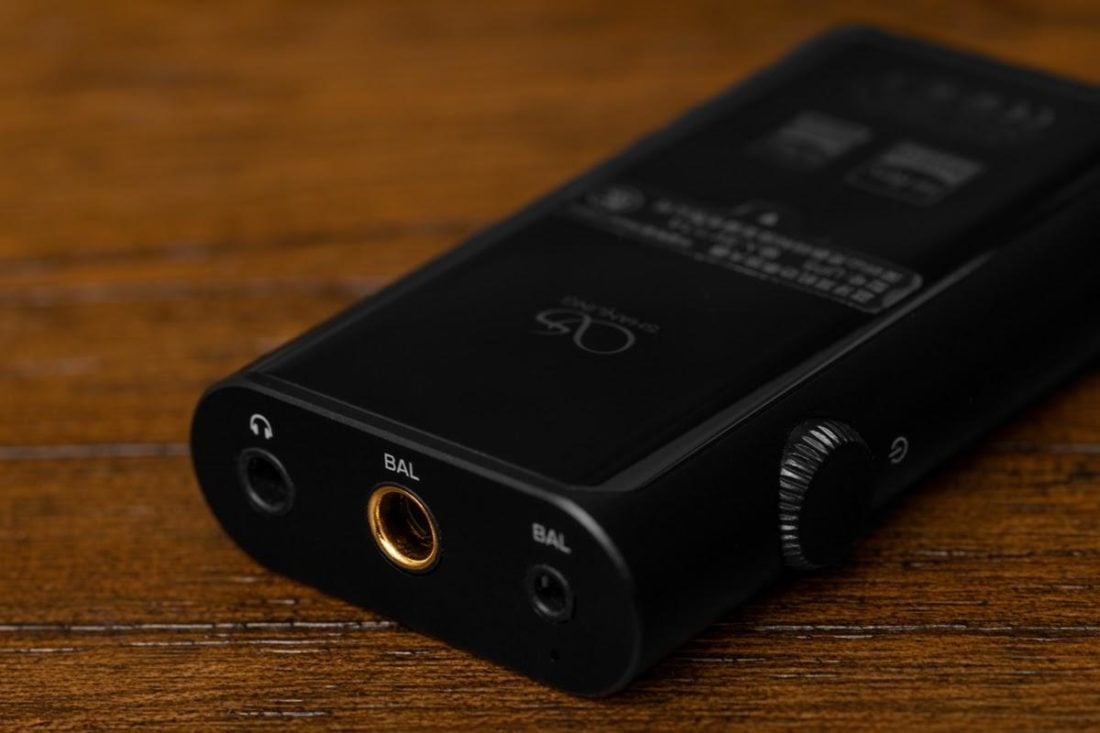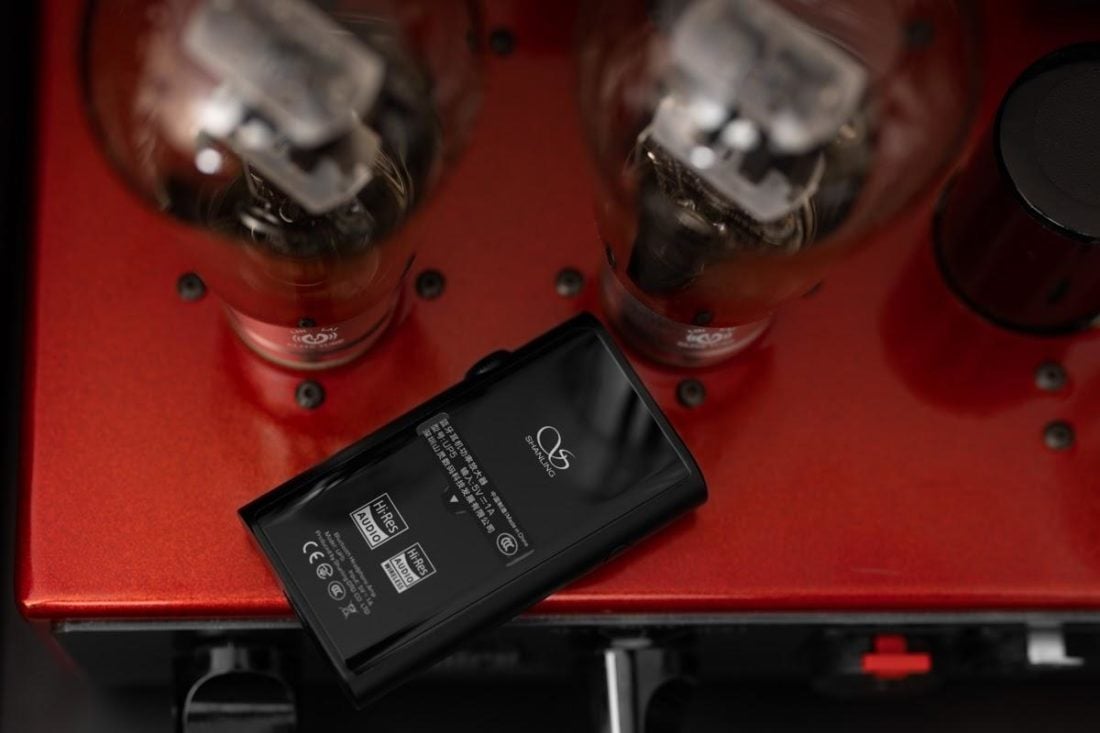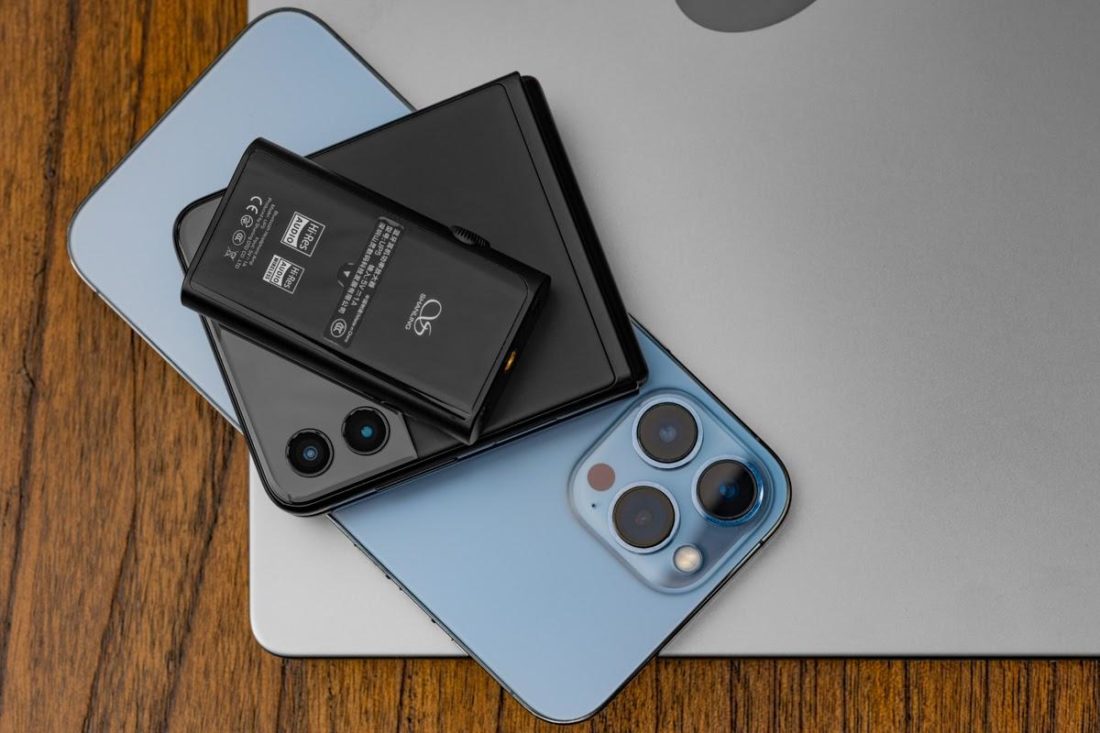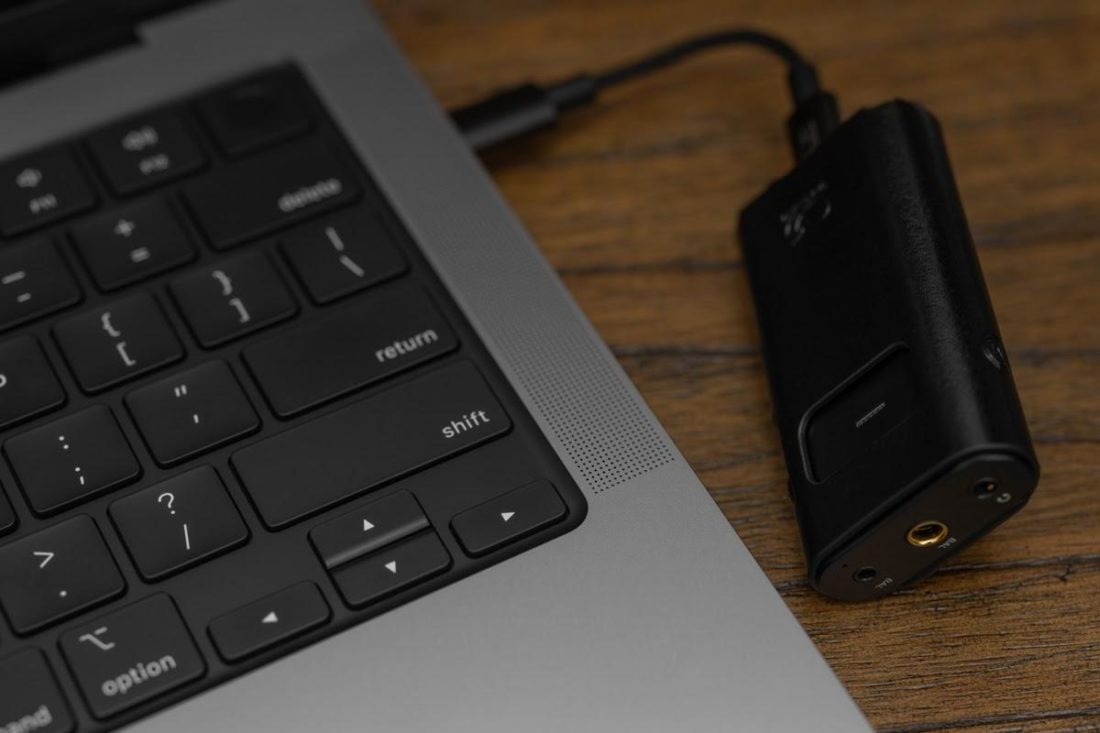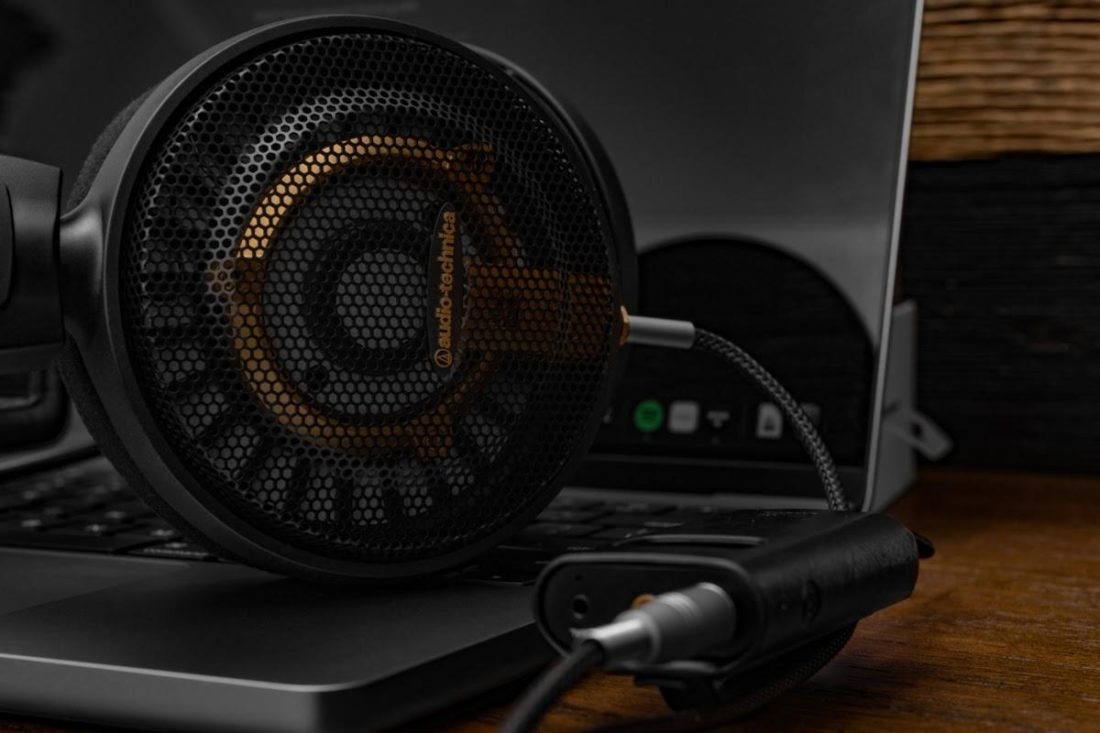The Shanling UP5 is a Bluetooth DAC/Amp that packs dual ES9219C DAC chips and plenty of power into a sleek, portable glass-covered housing. It supports all the major Bluetooth codecs and gives you granular control over its dual DACs.
Technical Specifications
DAC/amp: 2X ESS Sabre ES9219C Outputs: 3.5mm single ended, 2.5mm & 4.4mm balanced Bluetooth Chip: Qualcomm QCC5120 Bluetooth Version: 5.0 Bluetooth Codec: LDAC, LHDC, aptX HD, aptX LL, aptX, AAC, SBC Output Power: Single ended, single DAC – 90 [email protected] Single ended, dual DAC – 112 [email protected] Balanced – 240 [email protected] Battery Life (Advertised): Up to 15 hours (single ended, single DAC) / Up to 11 hours (balanced) Battery Size: 680 mAh Size: 68 x 39 x 14.5mm Weight: 50g
Packaging and Accessories
The UP5 ships in a nice, full-color box with the DAC/Amp nestled in dense foam. The presentation is simple and elegant, just like the unit itself. The matte box lettering is raised, while the image of the UP5 is glossy. The box uses small magnets to keep itself closed. Overall, the packaging does a nice job of hinting at the quality inside.
In the box
Shanling UP5 Black, braided Type-C to Type-C cable Leatherette case w/ snapping belt loop USB Type-C to Type-A adapter User Manual
The belt loop on the case is a nice size and fits even my thickest belt. The strength of the snap is adequate in most cases but can come undone if pulled near the button itself. I wish they had gone with a clip, but it’s not bad. The only other downside to the case is when removing the UP5, it often turns the unit back on since the power button/knob is what keeps it in place. The Type-C cable is very strong while being one of the most flexible cables I’ve used. This comes in handy when I need to keep the unit out of the way of my MacBook dock. The Type-A adapter is simple and well-constructed. It’s a nice inclusion for those who do not have Type-C.
Design
The UP5 has a robust metal body with glass panels on the front and back. This, coupled with the rounded corners, seems like it would be slippery, but the UP5 is very secure in the hand. Up top there are 3.5 single-ended, 4.4mm balanced, and 2.5mm balanced connections. The tiny microphone cut-out is also present, just under the 2.5mm input. On the right side of the body, there is the power/volume knob combo. The power button is satisfyingly tactile as are the volume steps. It works nicely here since you’re probably adjusting volume in your pocket. The steps are a bit drawn out, but the default volume can be set in the app and helps with this. The feedback is nice to have in that situation. The left side of the body is where the play/pause/menu button is. It is basically flush with the body and I find it difficult to locate and press, especially when in the case. The button is covered completely with a small amount of embossing to help you locate it. I have not owned the previous iterations of the Shanling UP series, but the 5 is the first to include a screen. The monochrome OLED is handy for displaying battery life, connection status, volume level, codec type, and bitrate. It also includes an on-screen menu for items that were previously limited to the mobile app.
Internals
The UP5 uses dual ESS ES9219Cs DAC chips which are toggleable if you want to exchange power for battery life. Single mode gets you 90mW, while dual gets you 112 mW single ended. With either balanced connector, this increases to 240mW (all options at 32 ohms). If you want the longest listening time out of the 680mAH battery, single-ended/DAC mode will last 15 hours. Balanced cuts that down to 11.
Wireless
The UP5 supports Bluetooth with NFC pairing. I used my Samsung Galaxy Z Flip 3 for this, and it was as seamless as you would expect. I used my iPhone 13 Pro Max to test the Apple side of things. It isn’t as seamless given NFC is only for Apple Pay, but it connected in a few seconds nonetheless. The UP5 allows simultaneous device connectivity. Switching between the two phones during my testing without needing to re-pair was rather nice. You do need to turn off Bluetooth momentarily to switch which device you are using. Initial pairing and setup were painless, but things got messy for the first few days. I had problems with the volume exhibiting strange behavior. Random increase and stuttering were common, as well as resetting to default. It was rather startling when it happened. The 1.62 firmware was posted by an official Shanling representative, but it was on an enthusiast forum. The website version remains 1.60 as of this writing. The upgrade was simple enough but requires a Windows based PC to perform.
App
The app is the biggest downside to this unit. The first message I got was in Chinese and I had to hope I picked the right option. Once past what I assume was a welcome message, the text was in English. Some of the phrasing within the app can be confusing, especially in the EQ section. The UI elements are thin and can take a few tries to press if you have large hands. The EQ adjustment is the worst offender here as the lines are thin and the dot to adjust them is tiny. There are times when I’ll press a toggle button and it reverts to its original state without explanation.
Wired
On the wired side of things, I use an Asus ROG Flow X13 for Windows and a MacBook Pro 14-inch for macOS. In both cases the UP5 is plug-and-play. Windows takes a few moments to get everything going but works as expected, including MQA passthrough in Tidal. In macOS, things are near-instant and switch to the UP5 the moment it is plugged in.
UP5 Sound
The UP5 has clean sounding outputs. Throughout my testing I did not observe any hissing or humming. This is the case whether it is paired with IEMs or full-size headphones. The UP5 has a pleasant sound signature. It is not overly colored and takes a step in the lean direction. This is made clear when comparing it with my Radsone ES100. The ES100 is more impactful in the bass region without sounding much warmer. The pairing of my UP5 and my daily driver Moondrop Variations IEMs are a good experience. The Variations are bassy and some sources can run away with the low end. The UP5 keeps that under control. For headphones I went for PhilPhones. These are a mod and use Foster drivers (think Drop TH-X00) in Audio-Technica hardware. Being a fun focused pair of headphones, the UP5 lets them have a good time while remaining poised.
Where to Buy
Conclusion
While I don’t travel much in the current state of the world, I do enjoy getting away from the house and bringing my music with me. The UP5 makes a good companion for this. Shanling is very attentive when responding to firmware and software problems. This is good because the hardware seems solid. It would be nice to see the UP5 get firmware updates via the app. In a world where not everyone has a Windows PC, I think this would go a long way.
